How do you wallpaper? Here you get help and advice on wallpapering.
The wallpapers are chosen, but then what? How do you wallpaper? Here is a wallpapering guide with everything you need to know about preparation, which tools are needed, and how to wallpaper yourself.
What preparation do I need to do before wallpapering?
- The wall should be dry, smooth, and even. Remove old wallpapers if they are not smooth. If old wallpapers come off easily, they should be removed; only those that are well-adhered can remain. Apply filler and sand if necessary.
- If you are wallpapering over fiberglass or other painted fabric, you should clean the wall with a paint cleaner and rinse off. Then apply filler over the entire surface and sand.
- Textile wallpapers, jute fabric, and similar should be removed, use wallpaper remover if they are stuck hard.
- A painted surface should be lightly sanded to improve glue adhesion.
- Concrete and plastered surfaces should be filled where uneven, then sanded and dusted off over the entire area.
- On gypsum, chipboard, and fiberboard sheets, fill and sand any uneven areas. Joints on chipboard should be primed with alkyd paint to prevent the edges from lifting.
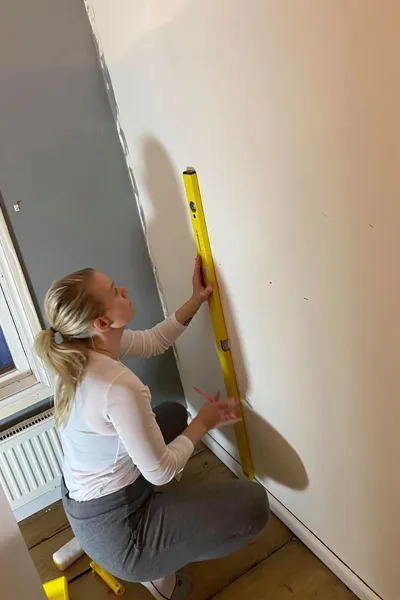
Linda Antus uses a spirit level to get the wallpaper strips perfectly straight. In older houses, the walls can sometimes be slightly skewed, so you can start with the second strip and then adjust the first strip to fit the corner.
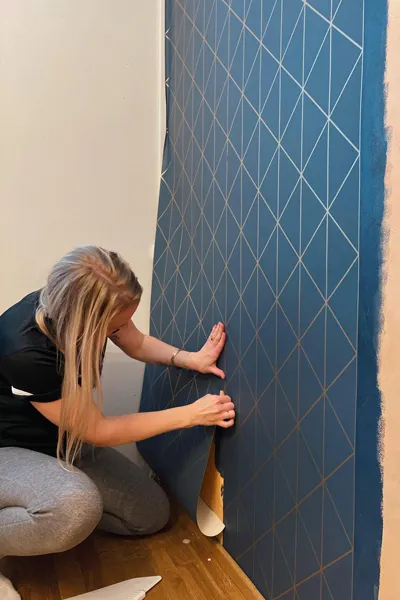
Pattern matching is essential for all patterned wallpapers. When wallpapering edge to edge with particularly dark wallpaper, it can be helpful to paint the wall behind it in the same dark color. This wallpaper is called Diamonds and is from Engblad & Co.
What tools are needed for wallpapering?
- Spirit level, measuring tape, plumb line, and a pencil to mark out and get the strips straight.
- A roller to apply wallpaper paste to the wallpaper or the wall, a brush to apply wallpaper paste in corners, along floor and ceiling moldings, and around windows and doors.
- A putty knife to remove bubbles and a dry cloth to wipe off excess glue.
- A wallpaper knife and scissors to cut/trim the wallpaper.
- A seam roller to ensure that all seams adhere properly.
- A sponge and a bucket of water to clean the wallpaper strips from paste as you work.
- Good lighting.

Good lighting is important when wallpapering. If you don't have access to a strong work lamp, a good headlamp works just as well. This wallpaper is called Deep Forest and is from Majvillan.
How much glue is needed?
With non-woven wallpapers, you should roll an even layer of glue on the wall. If you can draw with your finger in the glue and create a line or pattern, you know you've applied enough. Instructions on which type of glue to use can be found on the wallpaper roll.
With paper wallpapers, you should spread the wallpaper strips on a wallpapering table with the back facing up and apply plenty of glue to the wallpaper with a roller, all the way to the edges. Then fold the wallpaper in from both short sides towards the center and let it swell for 5-7 minutes. It is good to mark the wallpapers to show which end should be upwards.
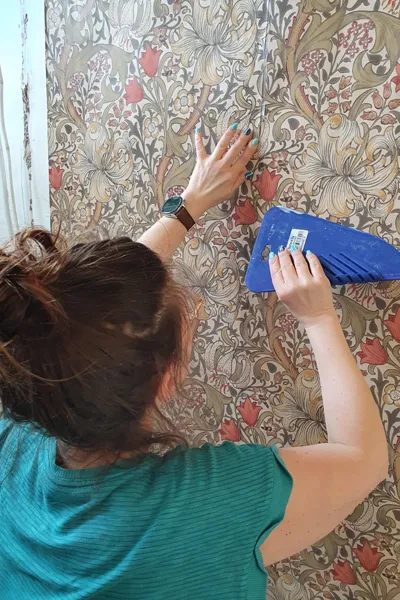
Laura Johansson smooths out any bubbles with a putty knife. The wallpaper is called Golden Lily and is from Morris & Co.
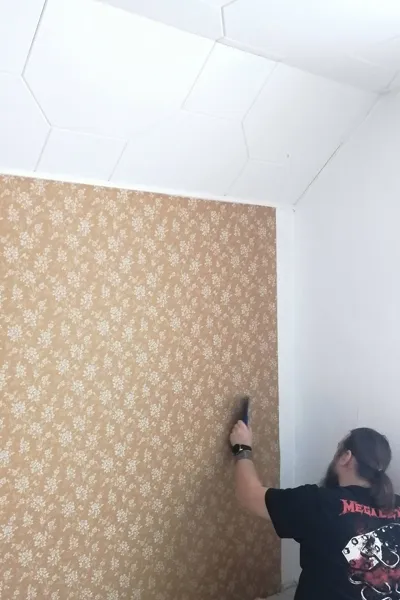
Karri Anttila makes sure there is glue everywhere behind the wallpaper and that it becomes smooth. The wallpaper is called Hip Rose and is from Boråstapeter.
How do I wallpaper with non-woven wallpaper?
- Start from a corner of the room.
- Apply the glue directly to the wall if you are wallpapering with non-woven wallpaper. Apply an even layer that is enough for about two strips. Use a brush to get the glue right against the corner and right to the floor and ceiling.
- Put up the first strip of wallpaper nearest to the corner. Check with a plumb line that the strip hangs straight. Make sure to remove any bubbles in the wallpaper with the help of a wide and clean putty knife. Wipe off excess glue with a dry cloth, do not rub.
- Cut the strip of wallpaper with a knife at the bottom.
- Put up the second strip so that it is right edge to edge with the first and so that the pattern matches the first strip.
- Continue this way until the entire wall is wallpapered. If it does not even out at the corner, you can fold the strip of wallpaper so that it continues on the next wall.
How do I wallpaper with paper wallpaper?
- Some paper wallpapers should be applied edge to edge, others with a few millimeters of overlap. Read the roll before you start, to know what applies to your wallpaper.
- With paper wallpapers, you have already applied glue to the wallpaper, so now you should unfold the part of the wallpaper that will be at the top and attach it to the dry wall. Start up at the corner towards the ceiling with a few centimeters of overlap towards the ceiling.
- Check with a plumb line that the strip hangs straight. Then unfold the lower part of the wallpaper. Brush out the wallpaper from the middle and out towards the edges. Cut straight with a sharp wallpaper knife.
- Wipe off the wallpaper with a wet sponge and lukewarm water without rubbing.
- Continue this way until the entire wall is wallpapered.
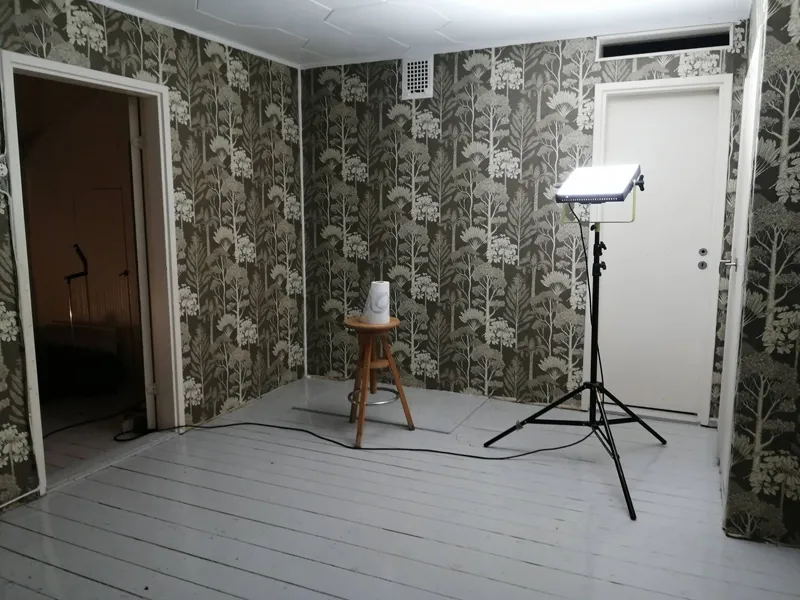
The wallpapering is finished. The wallpaper is called Trees and is from Ferm Living.
sources: sandbergwallpaper.se, familjetapeter.se, borastapeter.se, viivilla.se, engelskatapetmagasinet.se
Also read:
Having trouble choosing wallpaper? Order your wallpaper samples from Aveo
Large wallpaper guide - everything you need to know about wallpapers.
Building project underway? Request a quote!
Can't find the answers to your questions? Contact us today! We have been working with interior design questions for 15 years and are happy to help you!
